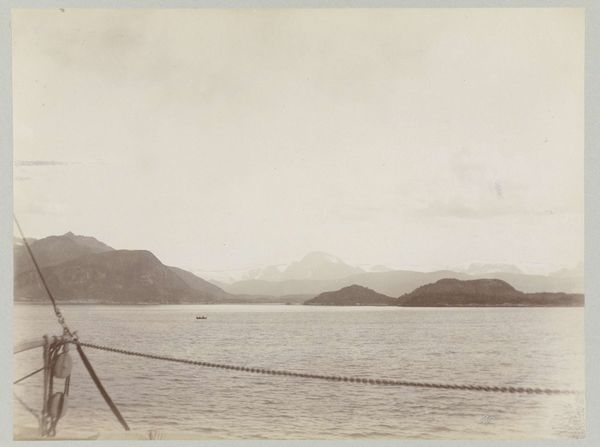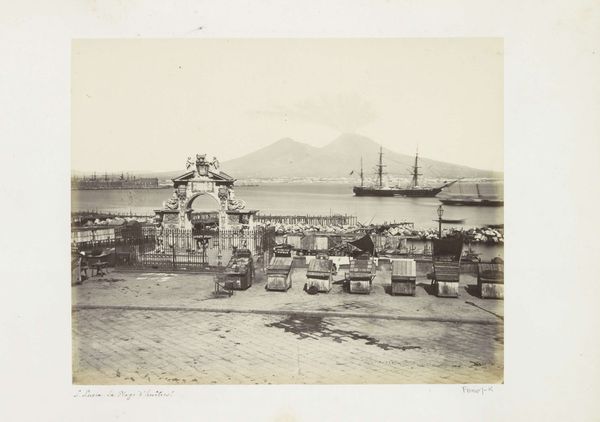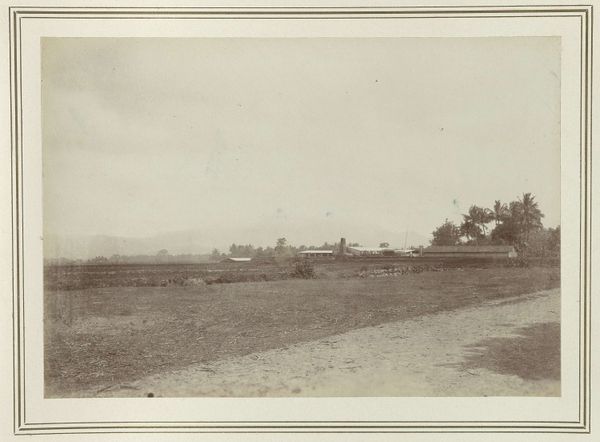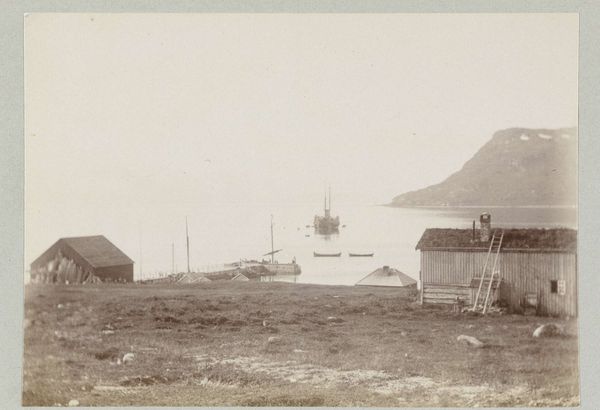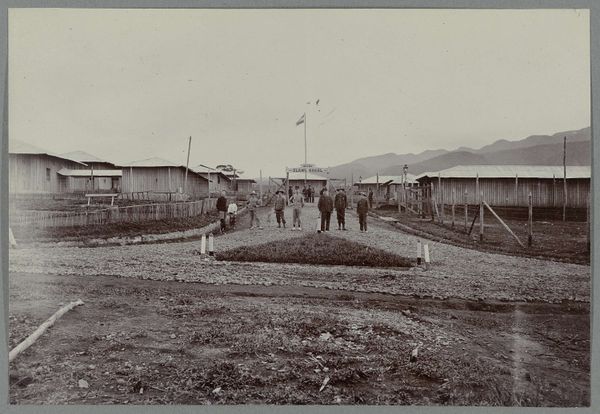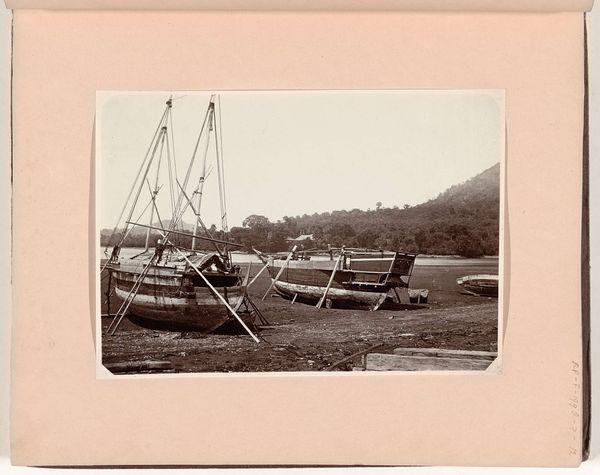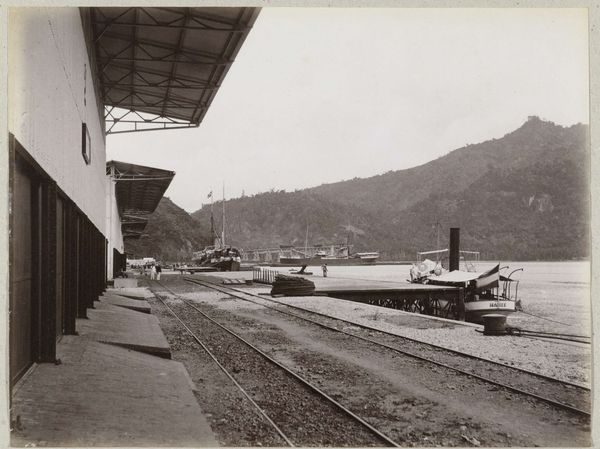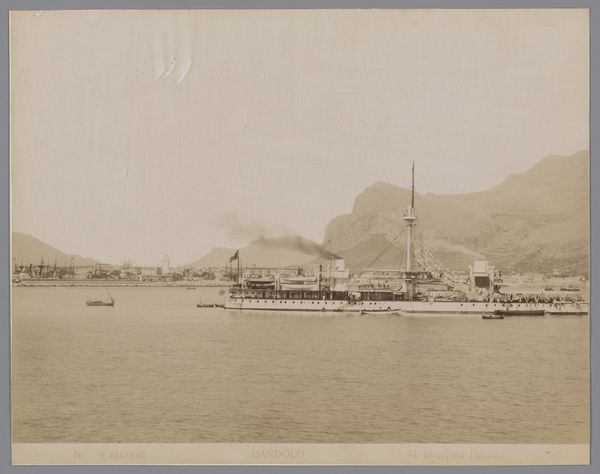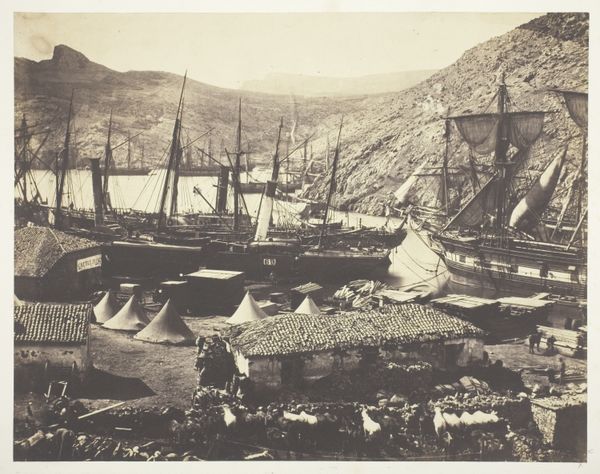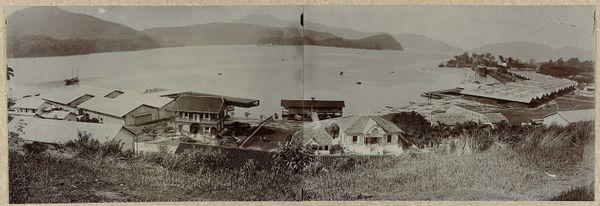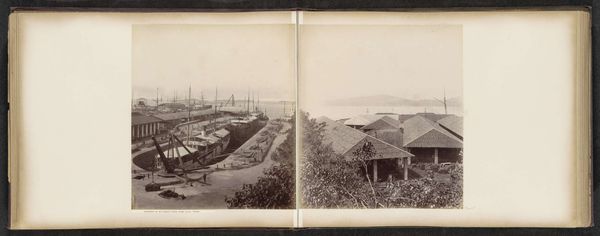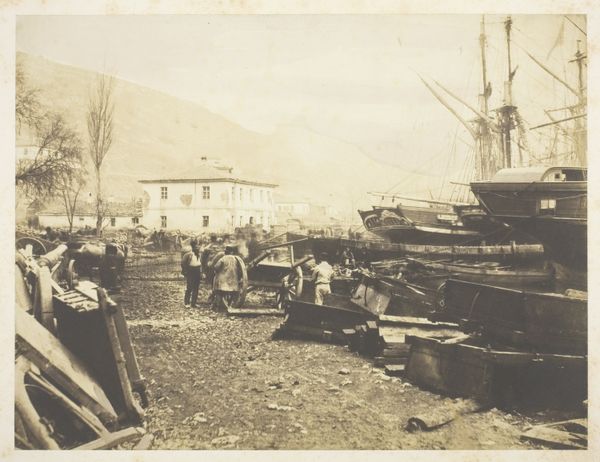
photography, albumen-print
#
landscape
#
archive photography
#
photography
#
historical photography
#
cityscape
#
albumen-print
Dimensions: height 154 mm, width 200 mm
Copyright: Rijks Museum: Open Domain
Editor: So, here we have Woodbury and Page's photograph, "Macassar," taken sometime between 1863 and 1869. It's an albumen print, and the sepia tones give it such a classic feel. I'm immediately struck by the way the image is composed. It's a landscape, but there's a definite sense of depth created by the buildings, the flagpole, and the mountains in the distance. What do you see in this piece, from an iconographic point of view? Curator: What fascinates me is how the photograph encapsulates a moment of cultural encounter and control. Look at the imposing flagpole at the center, with its web of ropes like a spider's silk. What could that possibly symbolize? Editor: I’m not sure, dominance, perhaps? Curator: Indeed! Now, notice how it bisects the image, neatly separating the architecture on the right – classic colonial style – from the more indigenous structures in the middle ground with a small, thatched roof, a completely different style. What do you imagine went through the colonizers minds when establishing such architecture in colonized land? Editor: Well, I suppose establishing a strong visual presence must have been crucial for asserting power and control... Curator: Precisely! It’s about creating a visual language of dominance, embedding a sense of permanence and superiority in the landscape. Editor: It's amazing how much history and power dynamics are packed into a seemingly simple image. Thanks for shedding some light on these colonial symbols! Curator: My pleasure. Remember, images are never neutral. They are imbued with cultural memories and encoded meanings, just waiting to be decoded.
Comments
No comments
Be the first to comment and join the conversation on the ultimate creative platform.
